Garmin livescope - Everything you need to know about livescope technology
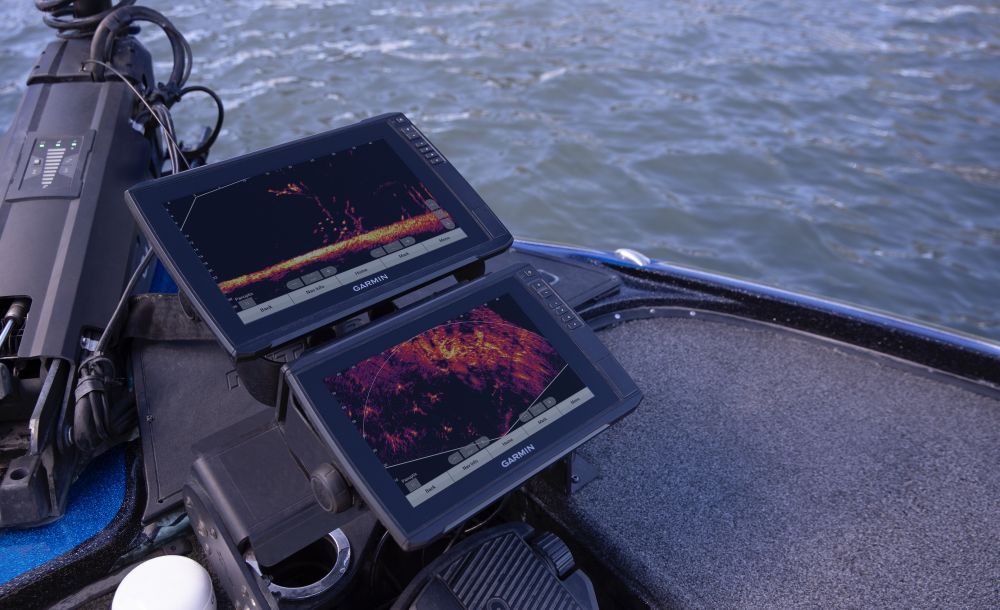
What is the Garmin livescope?
The Garmin Livescope is a fishing camera system that lets you see what's happening underwater in real time using a floating camera (LVS). It can be used to locate fish and plan fishing strategies. The Garmin Livescope is also used to monitor marine wildlife and the underwater environment. It is often used in conjunction with fishing depth sounders to provide a complete picture of what's going on beneath the water's surface.
What does the Garmin livescope consist of?
It generally consists of a floating camera or probe (LVS32, LVS34, LVSXR) which is connected to a control box (GLS10) on board the fishing boat. This camera is usually attached to a mast or floating arm that keeps it at a certain height in the water. However, it can also be attached to the shaft of electric motors, which can be unfolded using the hand-held cable.
It sends images in real time to a screen on board the boat, allowing anglers to see what's happening underwater. This enables them to locate fish and plan their fishing strategies accordingly. The images can also be recorded for later analysis.
In addition to sport fishing, the Garmin Livescope is useful for monitoring marine wildlife and the underwater environment. Livescope can help researchers and marine biologists understand the movements of fish and marine animals, and monitor the state of marine ecosystems. We can also use it for professional fishing for greater accuracy and efficiency.
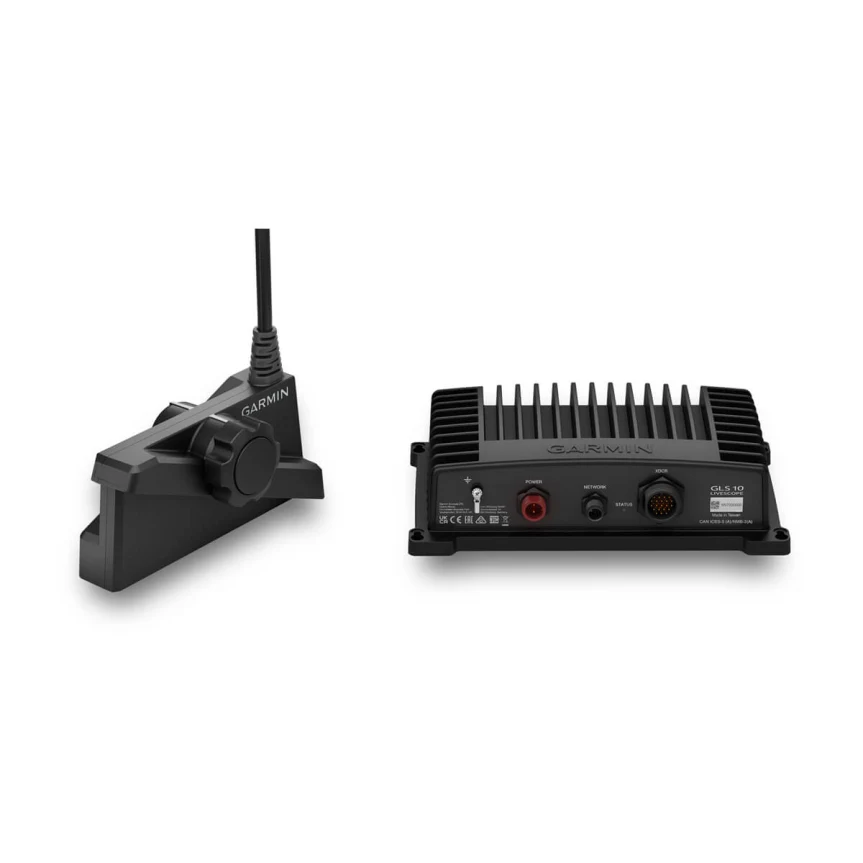
Which electric motors can accommodate the Livescope?
- Garmin Force 50 and 57 inch
- Minn Kota Ultrex
- Minn Kota Fortrex
- Lowrance Ghost
- Minn Kota Edge
- Minn Kota Maxxum
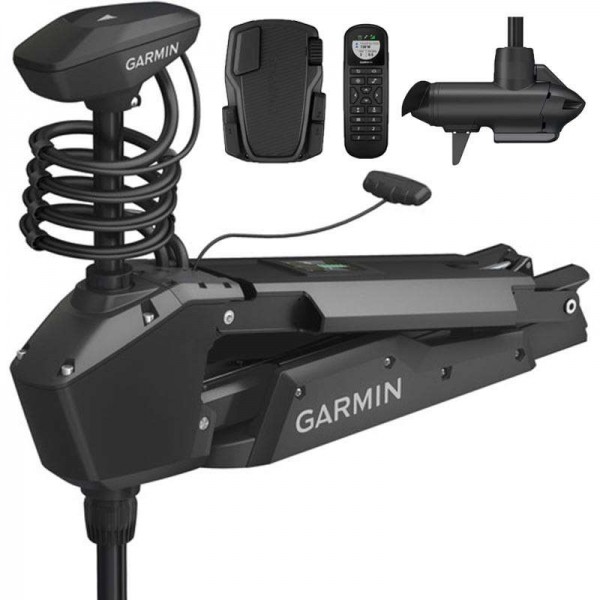
Which echo sounders are compatible with the Garmin Livescope?
There are several handsets compatible with the Garmin Livescope, including the following:
- EchoMap UHD
- GPSMAP Plus
- EchoMap Ultra
- GPSMAP Ultra
- GPSMAP XSV
How do you choose between the LVS32, LVS34 and LVS XR?
There are several types of Gamin Livescope XR, LVS32 and LVS34, and here are some of the differences between them:
- Garmin Livescope 62 XR: This is a side-scan sonar system that allows you to see fish and structures below the boat in real time. It has two probes, one for side scan and the other for depth scan. It allows you to see at depths of up to 100 metres. This probe is particularly suited to the marine environment.
- Livescope LVS32: This is a side-scan sonar system that allows you to see fish and structures below the boat in real time. It has a side scan probe. It can see at depths of up to 30 metres. It's the first of its generation, but also the most compact!
- Garmin Livescope LVS34: This is a side-scan sonar system that allows you to see fish and structures below the boat in real time. It consists of two probes, one for side scan and the other for depth scan. This allows you to see at depths of up to 50 metres. It has a greater range than other models. It has the most accurate image over distances of 20 metres. There is also a significant reduction in noise compared with the LVS32.

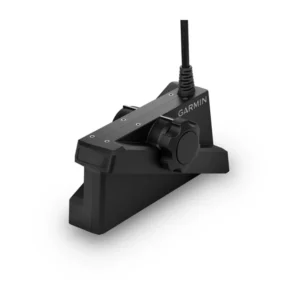
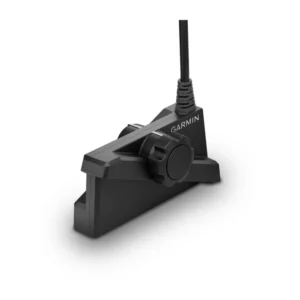
What are the different orientations of the Garmin Livescope?
The Garmin Livescope offers 3 different views so you can see the fish and structures below the boat:
- The first is the Forward view: The forward view lets you see what is happening in front of the boat, i.e. what is in the sensor's detection zone. It is useful for locating fish and structures, such as schools of fish and shoals.
- There is also the Perspective view: The perspective view is similar to the forward view, but it gives an aerial view of the sensor's detection zone. This view allows you to see fish and structures in high definition and in 3 dimensions, making it easier to locate fish and navigate in the shallows.
- Down view: The Down view is a diving view that allows you to see what is happening directly under the boat. It is useful for seeing fish directly under the boat and for avoiding underwater obstacles.
To optimise the perspective view, you will need Garmin perspective support.
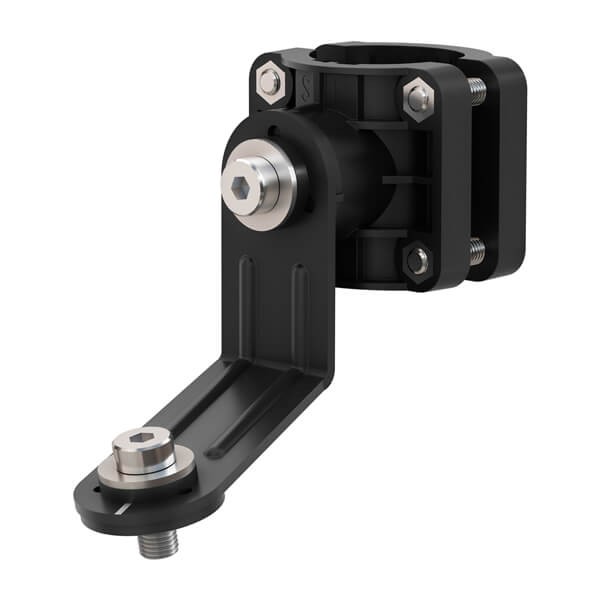
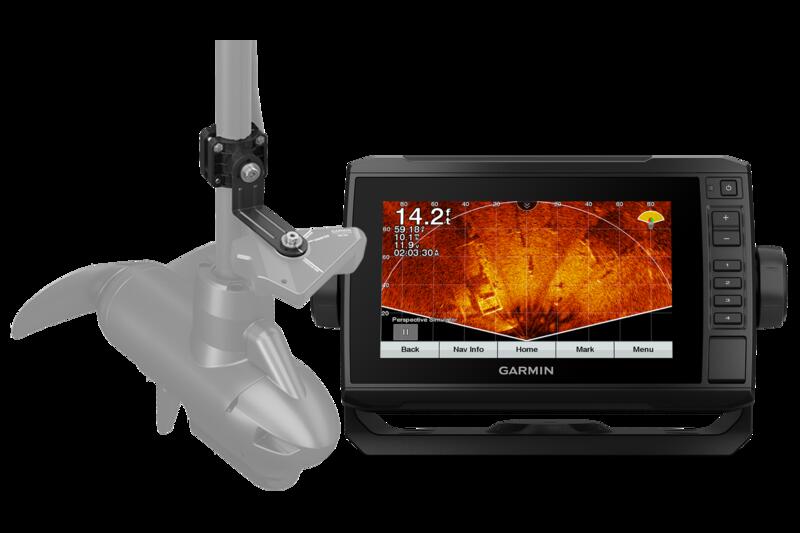
What are the technical specifications of the Garmin Livescope?
To help you choose the right livescope, here are the technical specifications for the Garmin Livescope. These may vary depending on the model, but here are the general specifications:
- Operating frequency: 2.4 GHz
- Range: up to 100 metres (320 feet)
- Resolution: up to 1.5 cm (0.6 inches)
- Scan angle: 180 degrees
- Power supply: 12VDC / 30VDC
- Operating temperature: -20°C to 50°C (-4°F to 122°F)
- Water resistance: IPX7
- Dimensions: approx. 15.2 x 10.2 x 6.3 cm (6 x 4 x 2.5 inches)
- Weight: approx. 0.95 kg (2.1 lb)
ATTENTION: For the benefit of users, this information is important, many people use the livescope in 12VDC but we advise you to operate it in 24VDC for several reasons:
- Lower power consumption with 24V.
- Better definition.
- No risk of disconnection if your voltage falls too low.

If you're having trouble configuring your Garmin Livescope, here's a video link that's sure to help.
Pour toutes demandes de renseignements vous pouvez nous contacter sur hello@rodmaps.com
If you want to order this Garmin equipment you can go to www.shop.rodmaps.com or visit https://www.garmin.com/fr-FR/
Check out our other articles: www.rodmaps.com